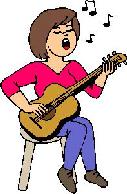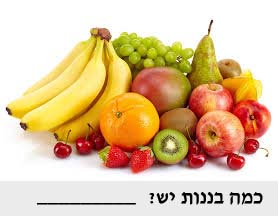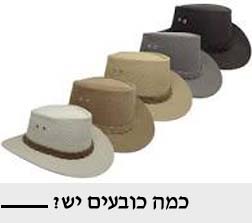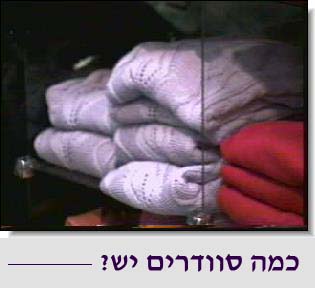2.26
קְריאה נוסֶפֶת
המיכְתב
100.00 %
בביִת כוּלם שתְקוּ.
Dear Benny, אני וְאתה —נְשַנֶה אֶת העולם" But seriously, !בִּרְצינוּת
2.26.1
בְּבקשה לְתַרְגֵם לְעברית
1. She knows how to read Hebrew _________________________
2.26.2
-אֶת
We have used אֶת in quite a few sentences in this chapter. Although אֶת is not a "word" in our sense of the term, it is important in Hebrew sentences.
It indicates whether a noun is being used as as a direct object in the sentence.
You only use אֶת when the direct object is a specific person or thing. 121 Write three sentences in Hebrew modeled on the sentences in § above,
1. ______________________________________________
2.27
לִסְפּוֹר
Read the caption under each picture. In Hebrew, write the number of items in the category named. 122
2.28
קְריאה בּתנ"ך
Most of the words in the Hebrew Bible are also in modern Hebrew (though sometimes the meaning of a biblical word is not the same
in Israeli Hebrew). However the grammar and word spelling vary somewhat. In this section of the book we will introduce
some of these differences.
100.00 %
Genesis 1:27בְּצֶלֶם אֱלׂהִים בָּרָאֵ אׂתוֹ זָכָר וּנְקֵבָה בָּרָא אׂתָם In the image of God He created him; male and female he created them. Genesis 4:1וְהָאָדָם יָדַע אֶת־חַוָּה אִשְׁתּוֹ Now the man had known his wife Eve. . . comments: 1. וּנְקֵבָה In formal speech the grammar rule is that וְ (and) is pronounced וּ before a shva vowel.
In biblical and other "pointed texts" this rule is followed. צֶלֶם אלוהים Note that the vav (for the "oh" sound)in אֱלׂהִים is not written in the Bible.
The phrase צֶלֶם אֱלׂהִים is what may called a "compound noun" because it is a phrase made from two separate words
which are now a single notion. An example in English is "bookstore" made from two words book + store. In Hebrew
this construction is called סְמִיכוּת. In simple modern Hebrew one could use שֶל and say הַצֶלֶם שֶל אֱלוהים.
123 A CONCISE LIST OF THE GRAMMATICAL NOTIONS WE HAVE
The system of symbols Hebrew uses to indicate the vowels is a major challenge for the beginner. ניקוּד
is very useful when you encounter a new word. It helps you pronounce the word accurately. Here are the topics that appear in Unit Two:
1. Negation §2.3
The last item is so veryimportant. No textbok or course can ever prepare you
מַשֶהוּ לׂא בְסֵדֶר, אני שאלְתי.
אבּא וְאמא אמְרוּ בְיַחד. מיכְתב מֵאמֶריקה!
בני, יֵש לְךָ מיכְתב מֵאמֶריקה, מִשיקאגו.
זֶה מִמִשֶהוּ בְשם דוד.
דוִד חבֵר חדש שֶהִכַּרְתי באוּניבֶרְסיטה.
קראתי אֶת המיכְתב מהֵר. המיכתב היה בְאנְגְלית עִם קְצת עִבְרית
כי דוד לא יודֵעַ הרְבֵּה עִבְרית, רק קְצַת.
זֶה מיכְתב ארוךְ? —שאֲלה אמא.
לׂא, הוּא קצר, אמרְתי.
קראתי אֶת המיכְתב בְקול רם.
I'm in chicago. I just wanted to tell you how much I enjoyed working with you on the "project."
I feel what we are doing is important and can make a diffrence.
I appreciated the way we worked together.
See you next semester!
שֶלְךָ, דוד
![]()
2. I know (f) how to write in English. _______________________
3. Did you (f) write a letter?________________________________
4. Excuse me, does she know Hebrew___________________________
5. What did I write ? ________________________________________
6. I forgot for a moment.____________________________________
7. I am in Philadelphia._____________________________________
8. Where is my letter?________________________________________
9. Who wrote a letter?_______________________________________
10. Father and Mother are in New York._______________________
11. My aunt is a good teacher.________________________________
12. Your parents are in Israel. ____________________
13. Where is Tel Aviv? ____________________________________
14. Where did you go today? _______________________________
Please look at the comment now.
Below are a few of the sentences from this chapter which use אֶת. Look at the same sentence without the אֶת.
Read them carefully and then write a few sentences of your own with and without the אֶת. Be sure you pay attention
to the use of the prefix ה before a noun that is a direct object. The use of אֶת will be explained more fully in §3.24.

Did you write the book, Rina?
כתבְתְ אֶת הסֵפֶר, רינה?
Did you write a book, Rina?
כתבְתְ סֵפֶר, רינה?
Please write the name.
בְבקשה לִכְתוב אֶת השֵם.
Please write a name.
בְבקשה לִכְתוב שֵם.
He gave the book to Rachel.
הוא נתן אֶת הסֵפֵֶר לְרחֵל.
He gave a book to Rachel.
הוא נתן סֵפֵֶר לְרחֵל.
I read the letter quickly
קראתי אֶת המיכְתב מהֵר
I read a letter quickly.
קראתי מיכְתב מהֵר.

each group of sentences both with and without the use of אֶת.![]()
2. ______________________________________________
3. ______________________________________________




The biblical sentences we will present have words that match words you have learned
in the same chapter of your book. We will show the familiar words in color to help you identify the word and its meaning.
Hebrew Bibles are printed with "block letters" and not "script letters" so we will only show the text in "block letters"
2. אִשְתוֹ In simple non-biblical Hebrew one could say האישה שֶלו for "his wife.
SEEN IN THIS UNIT
On the other hand, the vowel symbols are easily confused when you are a beginning learner and they create an extremely crowded page!
At
this stage of your study it seems impossile to believe that the day will come when you find it easier to read without any ניקוּד,
but it is true! But for that to become true, you will have to learn to recognize the "patterns" of verb and noun forms. Only then
will you be able to predict how the word should be pronounced.
2. The use of the letter ה to indicate a vowel at the end of a word §2.4
3. The vowel marks §2.5; §2.7
4. The most important of the vowel marks, the שְווא, to mark a consonant cluster or to close a syllable. §2.5.3; §2.7
5. The spelling differences in כְתיב מלֵא and כְתיב מסֵר . see § 2.7
6. Counting from one to ten §2.9; §2.20;
7. The singular forms of the personal pronouns §2.10.
8. The introduction to the Past Tense forms of the common verb. §2.10.
9. The Possessive Pronouns §2.16.
10 Practicing the skill of "gisting."
adequately for your encounter with the "Real World" of language use. No matter how
many vocabulary words you learn, there is always the moment when our conversation partner uses a word you don't know.
What will you do? Press the panic button and retreat into a corner?
No! Never! What you will do, is to start your brain working at high speed to figure out
what is being said. That's why the skill in "gisting" is good training for the "real World."
Just when you are starting to get the hang of reading and writing the Hebrew letters, you are in for another shock: Unit Three
introduces you to the "printed" letters that are used in books and other printed materials.
הֶעָרָה
What is a direct object?
In the sentence "Jack hit the ball" the action word, (verb) is hit. What did Jack hit? The answer is: the ball
The direct object is the word in the sentence that receives the action.
1. Jack baked a cake.
2. Jack broke his nose.
3. Jack wrote the letter.
In these three sentences the direct objects are: cake, nose, and letter. In the sentence "Jack was a busy boy" there is no direct object.